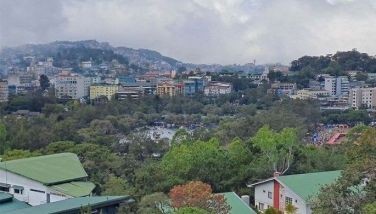P100 M paid for Norwegian?
DAVAO CITY, Philippines – Despite Malacañang’s no-ransom stance, more than P100 million was apparently paid for the freedom of Norwegian hostage Kjartan Sekkingstad from the bandit group Abu Sayyaf over the weekend.
Sources told The STAR yesterday that Sekkingstad’s family and friends from Norway raised the ransom money. Norway Ambassador Erik Forner reportedly flew to Davao in anticipation of Sekkingstad’s release.
“I would like to reiterate that the government maintains the no-ransom policy,” Presidential Communications Secretary Martin Andanar told government radio station dzRB yesterday. “Now, if a third party or the family gives ransom, we do not know.”
The Abu Sayyaf released Sekkingstad Saturday, about a year after the bandit group kidnapped him along with three others – Canadians John Ridsdel and Robert Hall, who were both beheaded months ago reportedly for failure to pay a P300-million ransom demand, and Filipina Marites Flor, who was released in June.
The four were snatched by heavily armed men at a private yacht club in the Island Garden City of Samal in Davao on Sept. 21, 2015 and held captive in Sulu.
The Abu Sayyaf released and handed over Sekkingstad to the Moro National Liberation Front, through MNLF Commander Tahil Sali, in the vicinity of Barangay Buanza, in the town of Indanan at around 8:30 p.m. last Friday, reports said.
He then stayed overnight at the place of MNLF chairman Nur Misuari in Barangay Kagay, according to Jesus Dureza, presidential adviser on the peace process.
“Chairman Misuari volunteered to host his stay due to heavy rains and nightfall,” Dureza said. “Men of Misuari, former governor Sakur Tan, and other volunteers helped in the release.”
The MNLF has signed a peace deal with the government.
President Duterte finally met Sekkingstad yesterday afternoon at the Matina Enclaves Residences in Davao City.
Devastating
Meanwhile, Sekkingstad yesterday described his one-year jungle captivity under the bandits as “devastating,” carrying a backpack with a bullet hole as a reminder of his ordeal.
Aside from the horror of constantly being warned he would be the next to be beheaded by the brutal extremists, Sekkingstad said he survived more than a dozen clashes between government forces and his captors in the lush jungles of Sulu province.
In one of those clashes, he recalled, he felt a thud in his back and thought he was hit by gunfire, but found out later that it was his green, army-style backpack that was pierced.
Sekkingstad said he and his fellow captives were forced to carry the militants’ belongings and were kept in the dark on what was happening around them. At one point, he said, their heavily armed captors numbered more than 300.
“We were treated like slaves,” he said.
After the militants decapitated Ridsdel in April, Sekkingstad was threatened by the militants, who repeatedly told him, “You’re next.”
When the negotiations for his release began in recent months, Sekkingstad said the rebels began treating him better.
It was not immediately clear whether Sekkingstad had been ransomed off. Duterte suggested at a news conference last month that P50 million had been paid to the militants, but that they continued to hold on to him.
The military said Saturday that relentless assaults forced the extremists to release the hostage.
In Norway, Prime Minister Erna Solberg confirmed that Sekkingstad had been “brought to safety” after his release.
Solberg said the Norwegian Foreign Ministry, police and diplomats “have done a great deal of work” to have Sekkingstad released, and thanked Duterte and Dureza.
In a statement posted on the Norwegian government website, Solberg said Norway supports the Philippine government “in their fight against terrorism and for peaceful outcome in the south” of the country.
Solberg told national news agency NTB that “Norwegian officials had not participated in any payment of ransom or made any concessions in the matter.” - With Edith Regalado, Alexis Romero, Rodel Clapano, AP
- Latest
- Trending


























